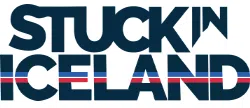Free and exclusive discount codes for hundreds of tours and & travel services in Iceland
Subscribe to instantly receive discount codes for tours, car rental, camper van rental, and outdoor clothing rental. Thank you! ❤️ Jon Heidar, Editor of Stuck in Iceland Travel MagazineOf course, everybody loves puffins—these slightly funny-looking birds with their colourful beaks and looking like distinguished priests are adorable. But since I was a kid, I have always considered the Icelandic raven as our national bird. To me, puffins were funny tasting birds which I disliked intensely. But I saw this beautiful image by my friend Olga Strakhova on Facebook. It showed a raven flying past an opening of a cave in Vatnajökull glacier. You may remember Olga as the girl with the Iceland tattoo. Follow her on Instagram for fantastic photographs from Iceland.
The Icelandic raven is always on the prowl
The photo reminded me that you will almost always see ravens on the prowl here in Iceland, especially in winter. It does not matter where you are or how the weather is. You will see them when the sun is shining, but somehow there seems to more of them when the weather is terrible. I admire them for their toughness and resourcefulness. The hard scrapping raven is an inspiration when life becomes tough. No matter how things are, the raven is out and about looking for food or playing in the wild wind.
Odin’s spies and messengers
There are so many myths about the raven. Odinn, the leader of the ancient pagan gods had his two ravens, Huginn and Muninn. Their names refer to either the mind (Huginn) and memory (Muninn). Odin’s raven’s served him well. They flew all over the realm of men, Midgard, and gathered wisdom and all the latest tidings for the god. No wonder Odinn was considered the wisest of the gods, he did have great help from his illustrious ravens.
Settling Iceland since 869
Ravens also play a part in the myths and sagas surrounding the settlement of Iceland. Hrafna-Flóki is said to be the first man to sail to Iceland intentionally. In the Faroe Islands, he got himself three ravens to help to him find Iceland. According to legend, when Flóki had been sailing for a while after he departed from the Faroe Islands, he set the three ravens free. One raven returned home, the second raven landed back on the ship, but the third one flew away to the North-West and disappeared. Flóki now knew that land was not far off.
Ravens get a bad wrap
In Icelandic folklore, ravens get a lousy rap. They often appear as omens of death or a scavenger. Sometimes learned men or priests are said to understand the language of ravens. In Icelandic folklore, ravens are supposed to reward people for giving them food. In one story, a poor girl shares her meagre food with a raven. The raven saves the girl from being hit by an avalanche which destroys the farm where she lived. Other inhabitants perish.

But still, God will reward you for the raven
An Icelandic saying states that ‘God gives rewards for the raven’ which means that the almighty will look favourably on you feeding ravens. In any case, ravens are considered the smartest of birds. Hrafnaþing or a raven’s meet takes place when a large of a large flock of ravens come together. According to folklore, this is when ravens decide which ravens get what farms to find food from humans.
Flight of luck
Icelandic folklore states that if a raven jumps around on a roof, changes his tune or caws into the air and shakes his wings, it means that somebody is drowning. A raven flying over you either means good or bad luck, depending on the direction of the flight.
Internationally Icelandic
It is an overstatement to call the raven ‘Icelandic.’ Fortunately, ‘Corvus corax‘ is found in many countries around the world. But still, there is something Icelandic about this tough bird. I find it amazing that the raven chicks are hatched in May when it is often freezing, especially at night. A notable enemy of raves are falcons which sometimes steal their nests. However, it is humanity that is the worst enemy of ravens. Sadly, humans kill thousands of ravens every year here in Iceland. But still, the raven soldiers on, hunted by falcons or humans, in blizzard or sunshine.
So consider the raven when the going gets tough. He does not give up that easily.




